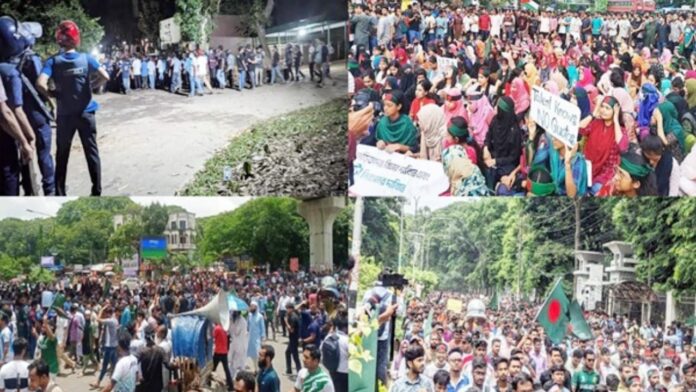In recent years, Bangladesh has witnessed several significant student movements. These movements have been driven by various issues, from road safety and education reform to demands for fair job quotas. The passion and determination of the students reflect their desire for a better future and their unwillingness to accept systemic injustices. As these movements continue to gain momentum, it is crucial to understand what both the people and the government can do to address the concerns raised by the students constructively.
Understanding the Student Movements:
Student movements in Bangladesh are not a new phenomenon. Historically, students have been at the forefront of many significant changes in the country, including the Language Movement of 1952 and the Liberation War of 1971. The recent movements are an extension of this legacy, highlighting issues such as road safety after the tragic deaths of students in traffic accidents and the demand for reforming the quota system in government jobs, which many see as outdated and unfair.
People’s Role:
- Support Peaceful Protests: The general public should support the students’ right to peaceful protest. This support can come in various forms, such as participating in demonstrations, providing logistical support, or simply voicing solidarity on social media. Peaceful protests are a fundamental right in any democracy, and the public’s support can lend legitimacy and strength to the students’ cause.
- Stay Informed: It is essential for the public to stay informed about the issues at the heart of the student movements. Understanding the specifics of what the students are fighting for can help in forming educated opinions and dispelling misinformation that might be spread by those with vested interests.
- Dialogue and Advocacy: People should engage in dialogue with the students to understand their perspectives better. They can also advocate for the students’ demands through various channels, such as writing to local representatives, participating in discussions, and using social platforms to spread awareness. Keeping silent in this crisis is not an option; similarly, promoting misinformation is very dangerous for all parties involved.
- Non-Violent Support: While supporting the students, it is vital to ensure that the support remains non-violent. Violence can derail the movement and give authorities a pretext to crack down on protesters. The public should encourage peaceful means of protest and discourage any form of aggression.
Government’s Role:
- Listen and Engage: The government must listen to the students’ grievances sincerely. Engaging in open dialogues with student representatives can help in understanding their demands and finding common ground. This approach can prevent misunderstandings and build trust between the government and the student community.
- Address Core Issues: It is crucial for the government to address the root causes of the students’ discontent. For instance, in the case of road safety, implementing stricter traffic laws and ensuring their enforcement can address one of the students’ primary concerns. Similarly, reviewing and reforming the quota system in government jobs to make it more merit-based can help meet the students’ demands for fairness.
- Ensure Safety: The government should ensure the safety of students participating in protests. Law enforcement agencies must act with restraint and avoid any form of violence or repression. Ensuring that protests can take place peacefully is a fundamental aspect of respecting democratic rights.
- Educational Reforms: Long-term educational reforms are necessary to address systemic issues within the education system. This includes updating curricula, improving educational infrastructure, and ensuring equal opportunities for all students, regardless of their socio-economic backgrounds.
- Transparent Communication: The government should maintain transparent communication with the public regarding the steps being taken to address the students’ concerns. Regular updates and clear communication can help in reducing tensions and preventing misinformation.
Moving Forward:
The student movements in Bangladesh are a powerful reminder of the younger generation’s desire for positive change. By working together, the people and the government can ensure that these movements lead to constructive outcomes. Support from the public, coupled with sincere efforts from the government to address the issues raised, can pave the way for a more just and equitable society. The goal should be to create an environment where students feel heard, valued, and empowered to contribute to the nation’s progress.







I would like to invite you to provide any constructive criticism you may have on this article. Your feedback will be greatly appreciated. Thank you.